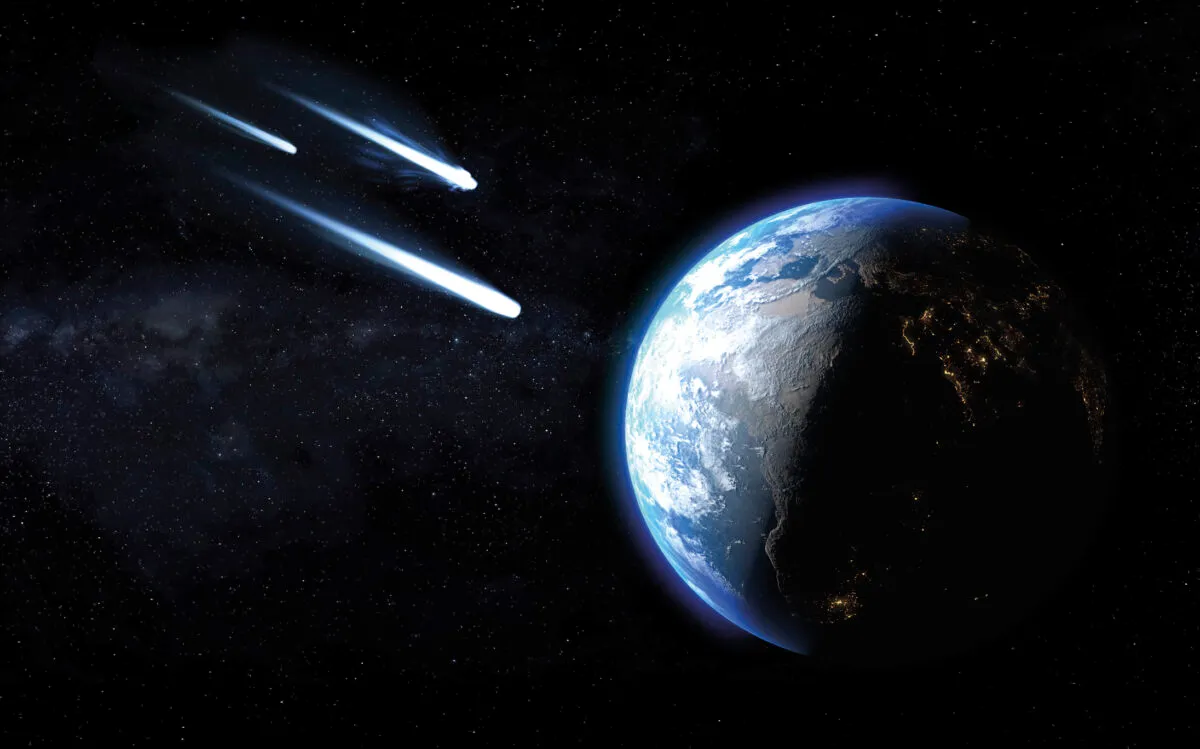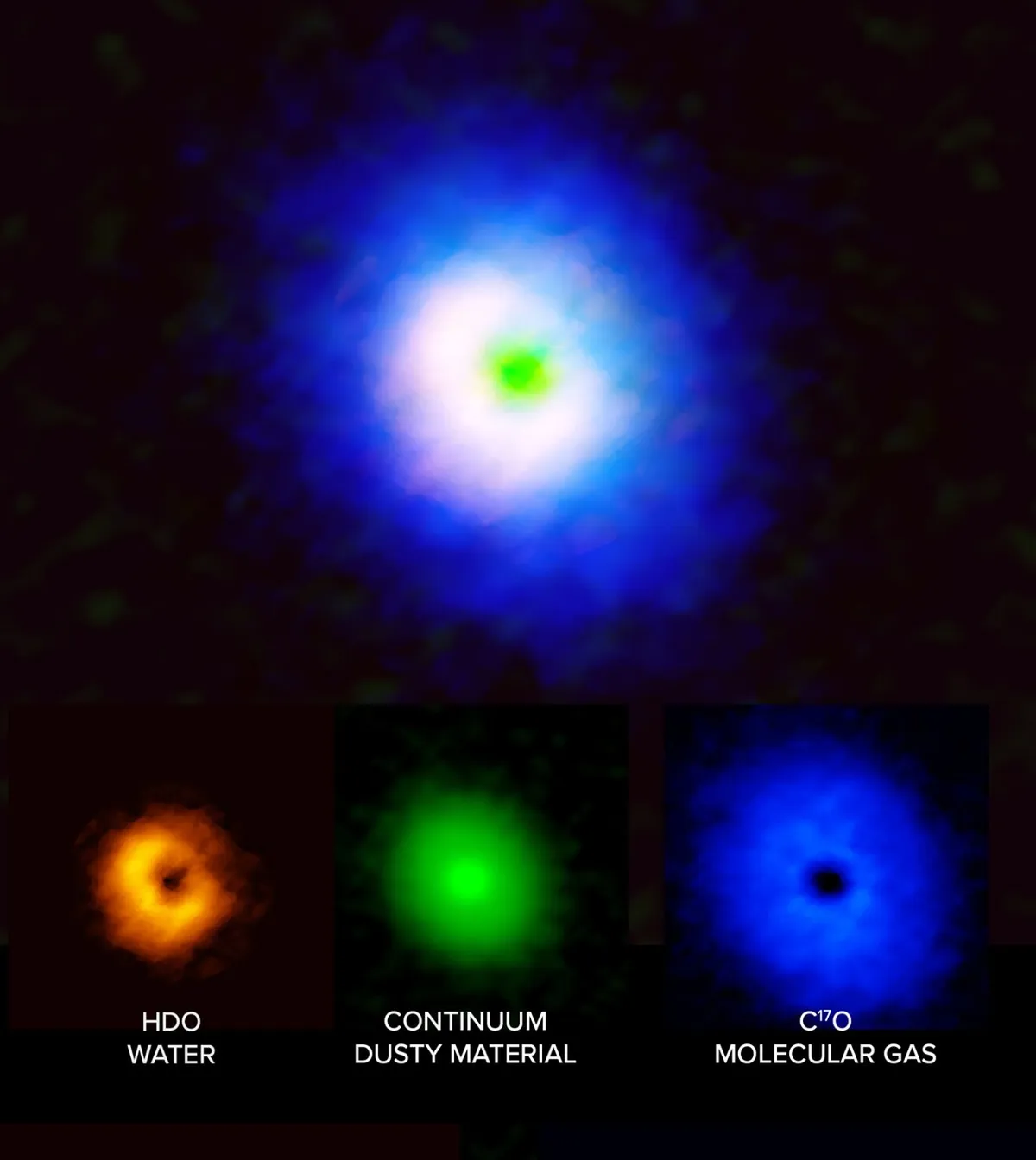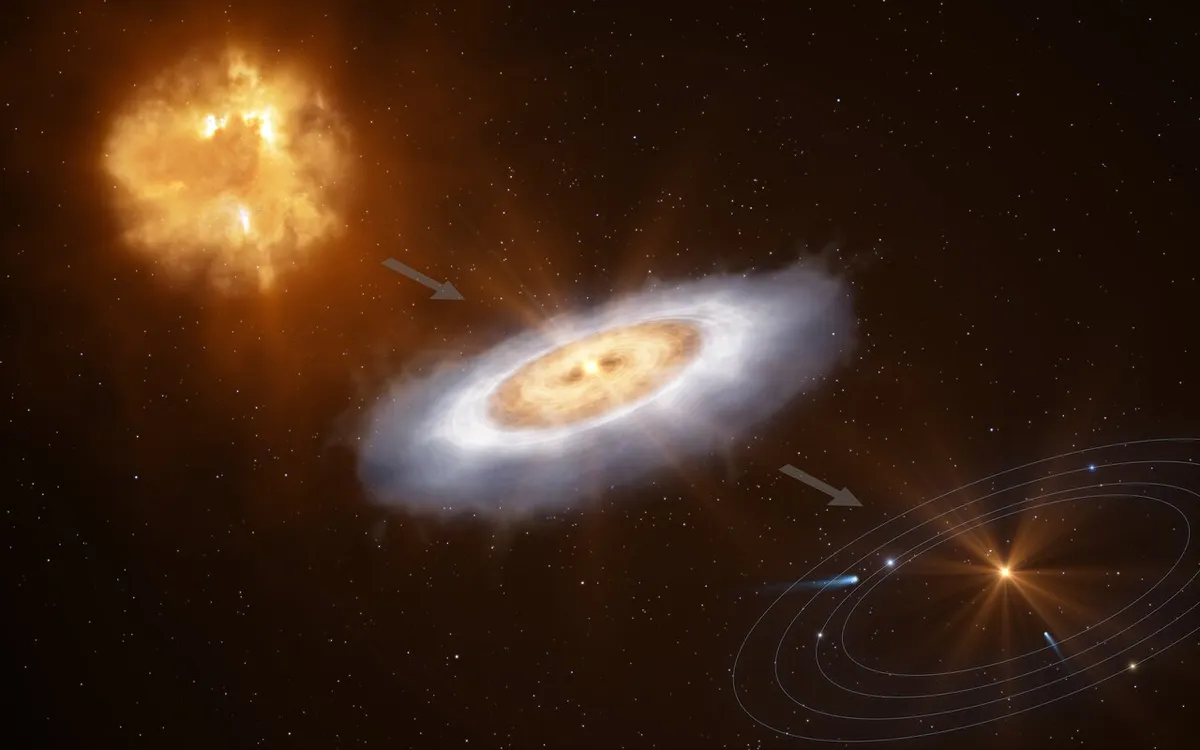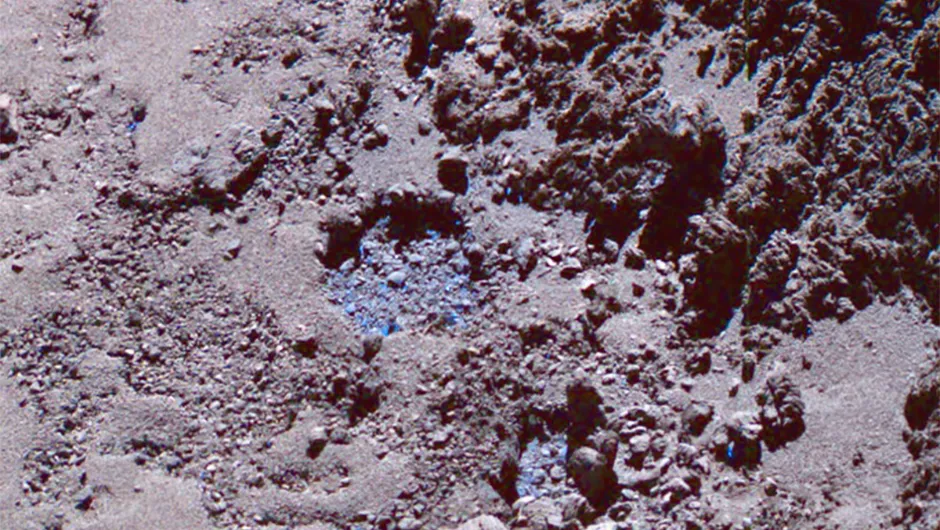How old is Earth's water? Could it be older even than the planet itself?
A team of astronomers say they've found the "missing link" that shows how water is delivered from gaseous star-forming regions in space to planets like Earth.
The research suggests that Earth's water is even older than the Sun.
The news comes as a result of studies of a dusty planet-forming disc surrounding a star 1,300 lightyears from Earth

How did Earth get its water? It's a question that many of us may have pondered ourselves.
We now know that, in its ancient history, Mars was a much warmer, wetter planet, and icy moons like Saturn's Enceladus and Jupiter's Europa are known to host subsurface oceans that could provide conditions suitable for life.
But where does water in the Solar System come from? How does a planet or other celestial body acquire water?
Astronomers using the Atacama Large Millimeter/submillimeter Array (ALMA) telescope in Chile have been studying star V883 Orionis.
In particular, they've been looking at the disc of cosmic gas and dust that surrounds the star.

Just as was the case with our own Sun in its infancy, a newly-formed star has a dusty disc of material in orbit around it.
Over time, gravity causes the surrounding material to coalesce and form larger and larger structures, which eventually grow into planets orbiting the star, just like Earth and the other bodies that orbit our Sun.
The team, led by astronomer John J. Tobin from the National Radio Astronomy Observatory in the USA, used ALMA to study the planet-forming disc around V883 Orionis, 1,300 lightyears away from Earth.
They were able to measure chemical signatures of water present in the disc and its path from star-forming cloud to planets.

Whereas the water that we most commonly know of on Earth consists of 1 oxygen and 2 hydrogen atoms, in this latest study the team analysed a heavier version of water in which one of the hydrogen atoms is replaced with deuterium, a heavy isotope of hydrogen.
And because 'simple' water and 'heavy' water form under different conditions, the team were able to use the water's ratio to discover when and where that water was formed.
For example, previous studies of comets have found they contain a ratio similar to the water on Earth, leading to the suggestion that comets may have delivered water to our planet.

"The composition of the water in the disc is very similar to that of comets in our own Solar System," says Tobin.
"This is confirmation of the idea that the water in planetary systems formed billions of years ago, before the Sun, in interstellar space, and has been inherited by both comets and Earth, relatively unchanged.
"We can now trace the origins of water in our Solar System to before the formation of the Sun."
Observing the water turned out to be a challenge, as you might expect of attempting to study the chemical makeup of a substance orbiting a star 1,300 lightyears away.
"Most of the water in planet-forming discs is frozen out as ice, so it’s usually hidden from our view," says study co-author Margot Leemker, a PhD student at Leiden Observatory in the Netherlands.
When water exists as a gas, astronomers can detect it because the molecules are able to spin and vibrate, generating radiation that can be studied using powerful telescopes.
But when the water is frozen, the molecules are much more tightly packed and don't move as freely.
In the outermost part of the disc around V883 Orionis, the water is frozen as ice and can’t be easily detected.
But outbursts of energy from the star itself heat the inner part of the disc, bringing it to a temperature where the water is gaseous, enabling it to be more easily detected.
The ALMA observations enabled the team to study the chemical composition of the water at V883 Orionis, analysing its makeup and mapping its distribution in the disc.
They found that the disc contains at least 1,200 times the amount of water in all of Earth's oceans.
Find out more about this story at www.eso.org/public/news/eso2302/ or download the research paper (PDF).

